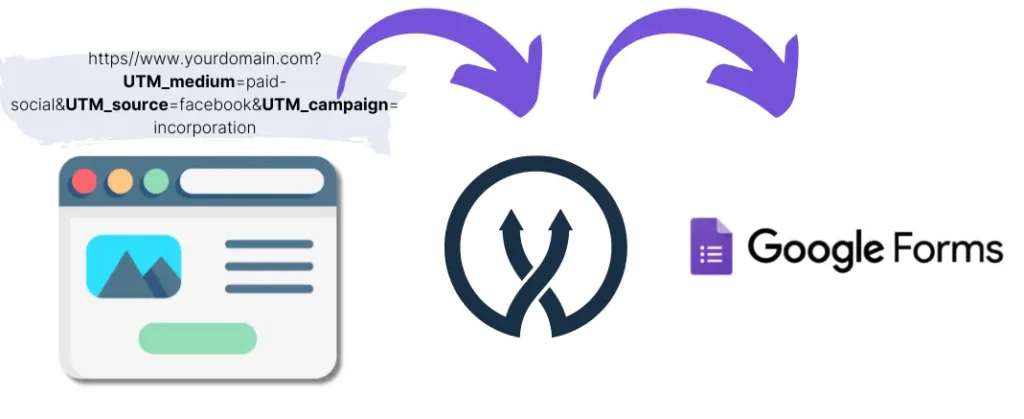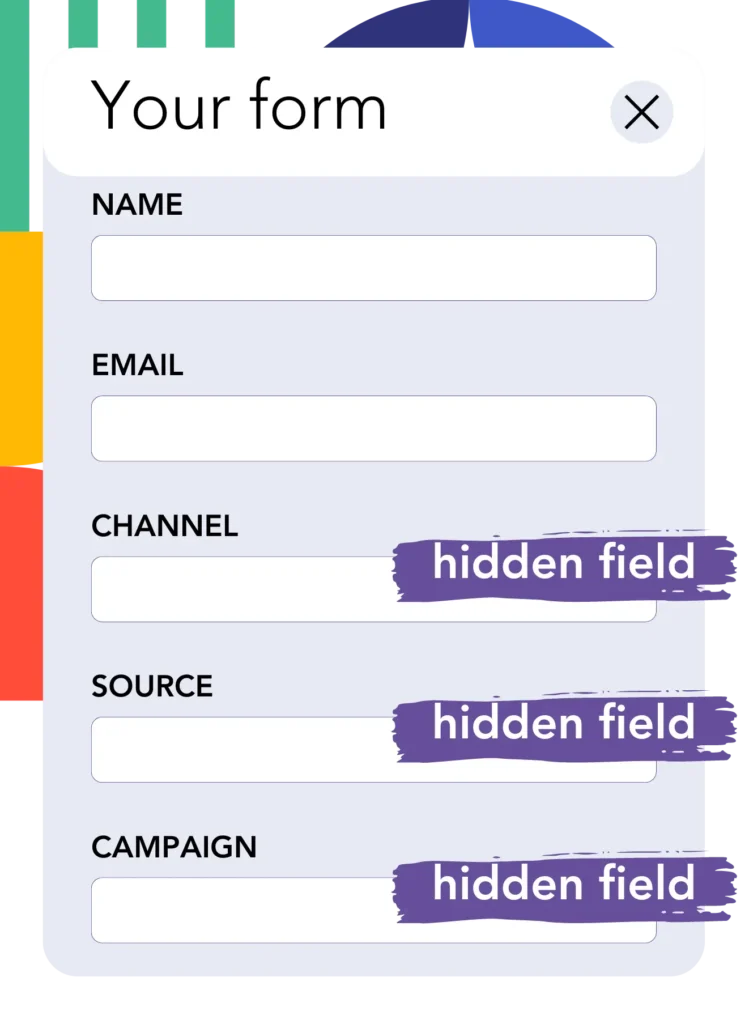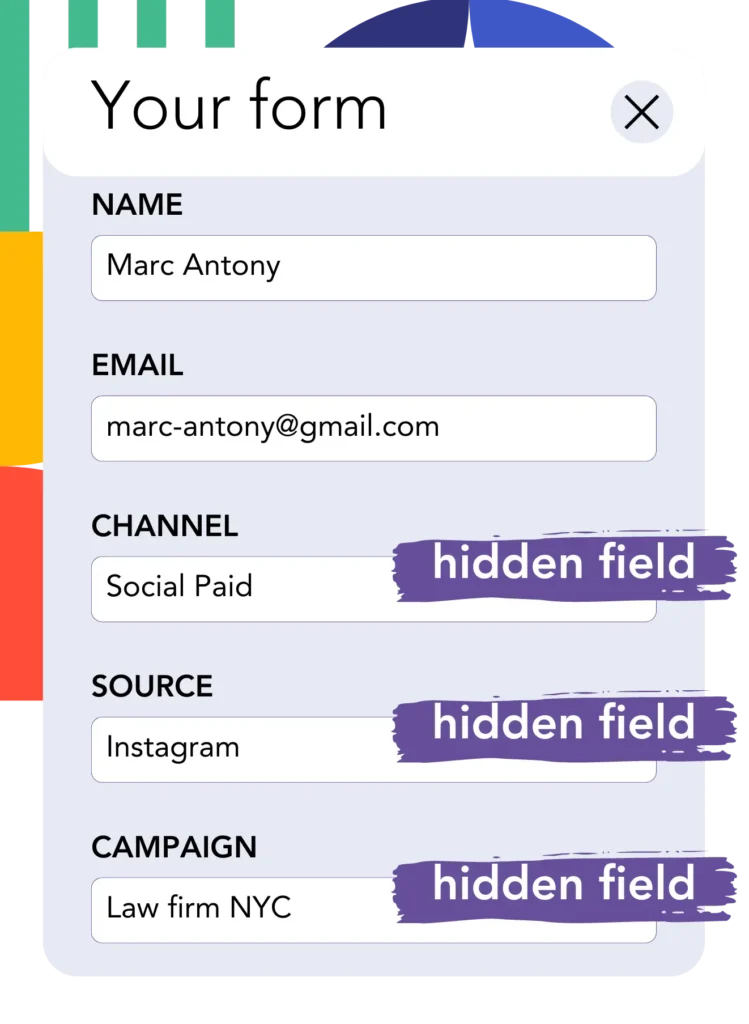Adding UTM tracking to Google Forms can be difficult, especially for those without coding experience.
But what if you could capture UTM parameters in Google Forms, without any coding required?
Introducing Leadsources.io!
Leadsources is a tool designed to track lead sources, acting as an intermediary between your UTM parameters and Google Forms.

When a visitor clicks on your marketing campaign, Leadsources captures the UTM parameters from your URL.
Leadsources then automatically fills these UTM parameters into hidden fields within your Google Form.
You can then view both the UTM parameters and the lead’s information on the submission page of Google Forms.
This guide will help you set up UTM tracking in Google Forms using Leadsources in just 10 minutes, and you don’t need any coding skills.
Set Up UTM Tracking in Google Forms in 4 Simple Steps
Step 1: Add Leadsources to your Website

Sign up for Leadsources.io and enjoy our 14-day free trial.
Place the Leadsources code into the head tag of your website. No coding or developers are required just follow our easy step-by-step guides.
Step 2: Add UTM Parameters to Your Campaigns

Include the UTM parameters you want to track in all your marketing campaigns (PPC, email, social media, etc.).
Leadsources supports the following UTM parameters:
- UTM_source
- UTM_campaign
- UTM_term
- UTM_content
Leadsources also captures additional information such as the channel, landing page, and landing page subfolder.
Step 3: Add Hidden Fields to Your Google Form

As visitors fill out your Google Form, they provide personal information in the visible fields (name, email, etc.).
At the same time, Leadsources automatically inserts the UTM parameters into hidden fields within your Google Form (channel, source, etc.).
To set this up, add the hidden fields in Google Forms to store your UTM parameters.
Add Fields for UTM Parameters
- Add new fields with names like
channel,source,campaign,term,content,landingpage, andlandingpagesubfolderusing the Short answer question type.
Add the exact following fields one by one:
- channel
- source
- campaign
- term
- content
- landingpage
- landingpagesubfolder
Step 4: Track UTM Parameters in Google Forms

When a user clicks on your campaign and visits your website, Leadsources captures the UTM parameters from your URL.
As the visitor completes your Google Form, Leadsources inserts the UTM parameters into the hidden fields. These fields are not visible to the user.
Upon form submission, both the UTM parameters and the responses are collected. You can view this information on the submission page in Google Forms.
How does Leadsources work?
By adding the Leadsources code to the head tag of your website, Leadsources captures UTM parameters from your URL every time a visitor lands on your site.
It then stores these UTM parameters in the hidden fields of your Google Form.
Even if a visitor arrives at your site without UTM parameters, Leadsources captures information from the referrer, such as:
- Channel
- Source
- Campaign
- Landing page
- Landing page subfolder
This allows you to track important lead source data regardless of UTM parameters, including:
- On Google Search
- On your Instagram bio link
- On your social media posts
While most tools can only track the source of your leads by using UTM parameters only, Leadsources allows you to track the source of your leads regardless of where they are coming from, UTM parameters or not:
- Organic Search
- Paid Search
- Organic Social
- Paid Social
- Referral
- Affiliate
- Display Advertising
- Direct Traffic
You get to collect all your lead source data in one place.
How to run performance reports
With your lead source data captured in Google Forms, you can create performance reports to make informed decisions about your marketing strategies. For example, you can generate reports on:
- Leads per channel
- Revenue per channel
- Revenue per keyword
Here’s how you can analyze the data:
Let’s go through the different reports you can generate to understand their features.
Lead performance reports
Generate reports to see the volume of leads by:
- Channel
- Source
- Campaign
- Landing page
- Landing page subfolder
Example #1
If you run campaigns across different channels (SEO, PPC, email, etc.), you can export the data and create a report like “Leads by Channel.”

Example #2
After finding out which channel produces the most leads (e.g., Google Ads), you can focus on this channel to break down the number of leads for each ad campaign.

Example #3
After determining which campaign is the most effective for lead generation, you can take this campaign and evaluate the keywords that are responsible for the leads.

Sales performance report
Knowing which ads and keywords are effective for lead generation is crucial, but do they lead to revenue?
By integrating Google Forms with GoHighLevel, you can generate sales reports to see how well these leads convert into revenue.
| Channels | Search Paid | Social Paid |
| Leads | 50 | 75 |
| Sales | 5 | 6 |
| Average order value | $150 | $100 |
| Revenue | $750 | $600 |
You ran ads on Google and Facebook and from this data, you might find that while Social Paid ads generate more leads, Search Paid ads yield higher revenue, suggesting you might want to increase your Search Paid budget.
By following these steps, you can easily track UTM parameters and assess the performance of your marketing using Google Forms and Leadsources.io.
